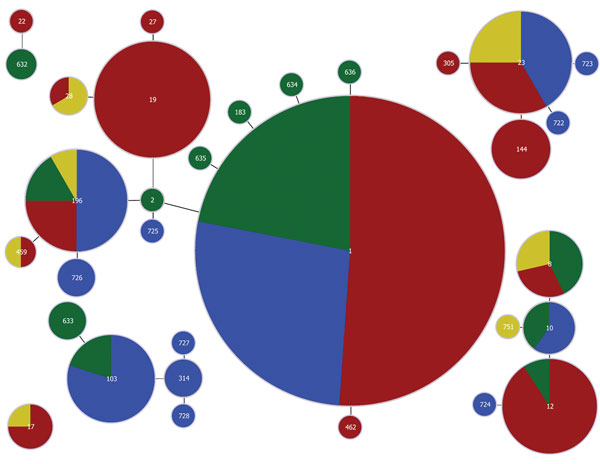Volume 22, Number 12—December 2016
Research
Streptococcus agalactiae Serotype IV in Humans and Cattle, Northern Europe1
Figure 1

Figure 1. Distribution of host species and countries across clusters of Streptococcus agalactiae sequence types (STs), with clusters including single- and double-locus variants. Each circle represents an ST, with size of the circle and its colored segments proportional to the number and origin of isolates, respectively. Red, human in Finland; yellow, human in Sweden; green, bovid in Finland; blue, bovid in Sweden. STs are indicated by numbers in the circles. Single- and double-locus variants are connected by black lines.
1Preliminary results from this study were presented at the 25th European Congress of Clinical Microbiology and Infectious Diseases; April 24–28, 2015; Copenhagen, Denmark.
2Current affiliation: Danish Technical University, Copenhagen, Denmark.
3Current affiliation: DNA Diagnostic A/S, Risskov, Denmark.